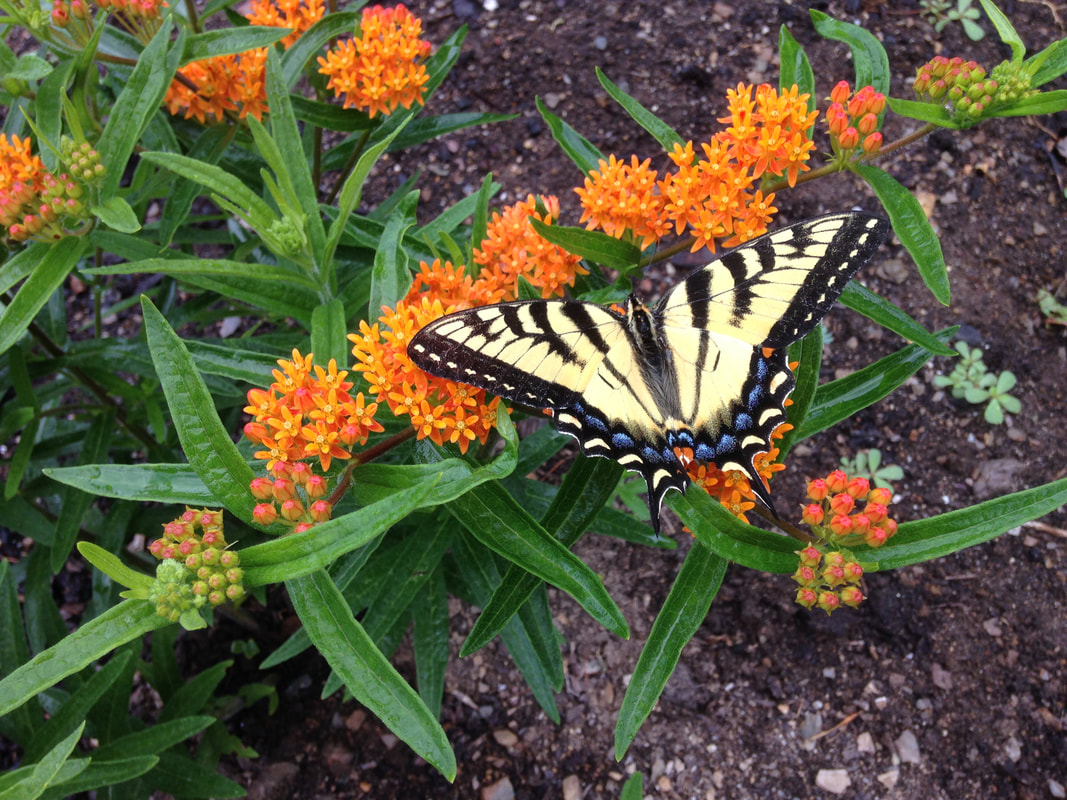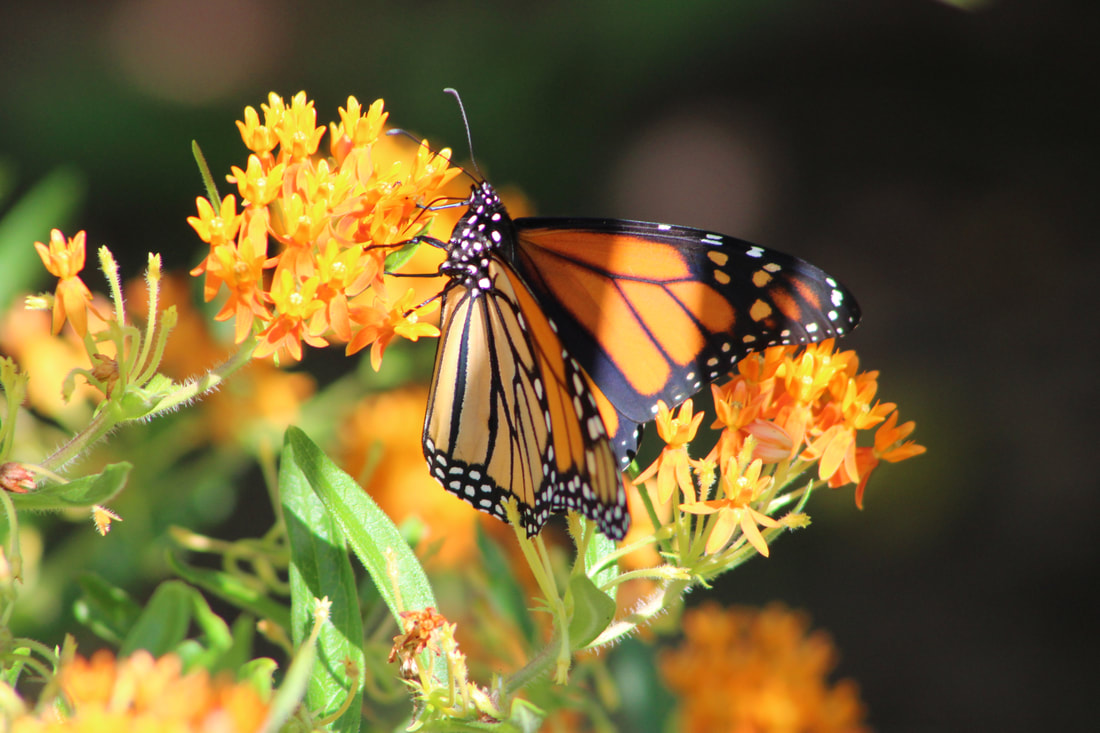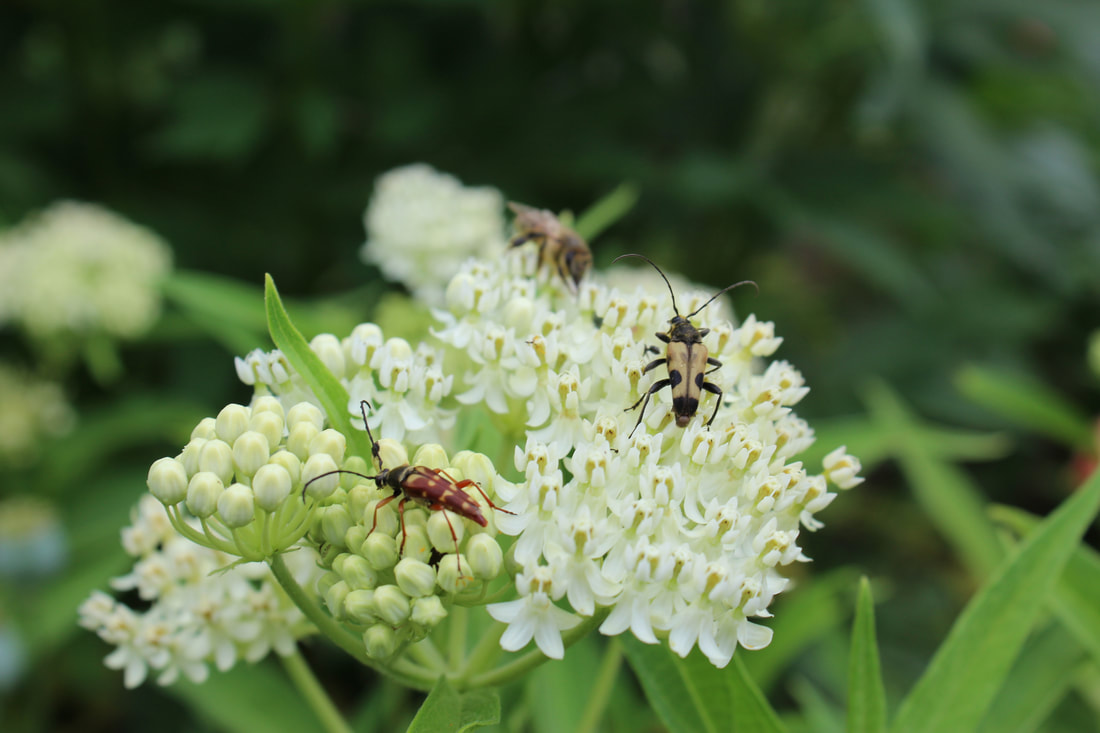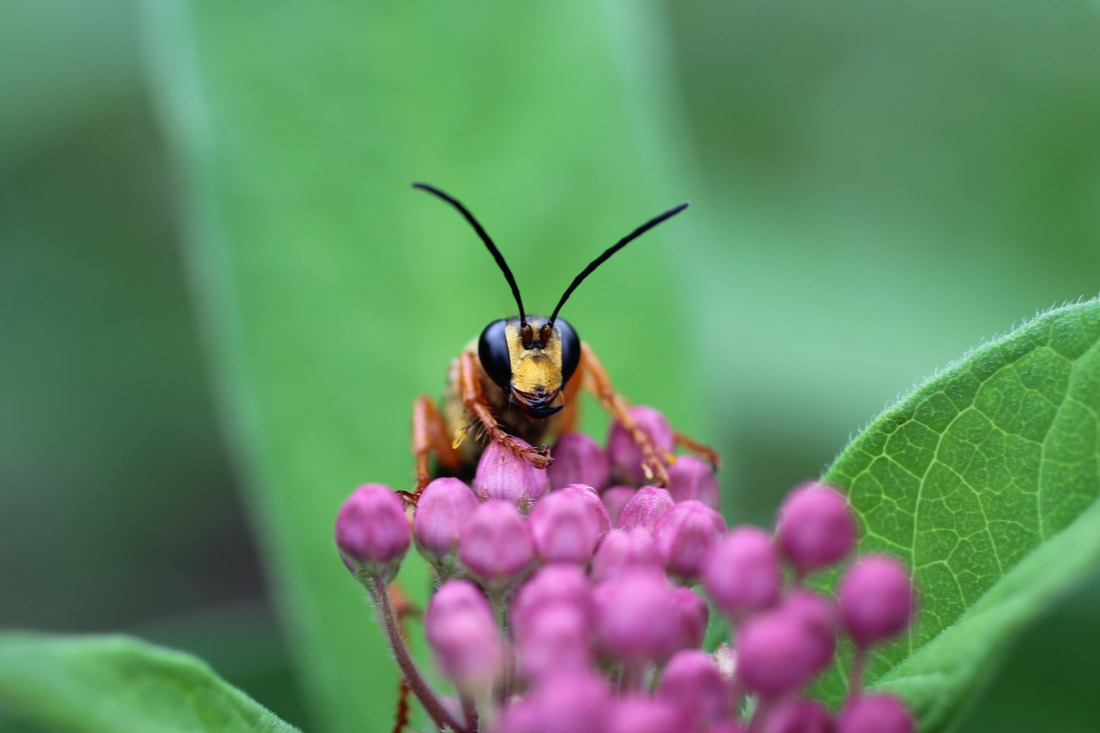|
I think the nicest surprise in my gardens this season so far is the butterfly Weed, Asclepias tuberosa. I've had a lot of trouble overwintering it in years past, especially after open wet winters. Come spring, the top or crown of the root will be soft and rotten, and the rot will extend down, essentially killing it. I plant it in well drained areas of my garden, which its recommended by most sources, but I still lose plants some years. It goes on and off of my plant listings as I never know whether I or my customers can depend on it. This year it's making beautiful splashes of orange in my gardens, coming up on its own from dispersed seeds of parent plants, or from roots that barely produced a single stem last year. It's supposedly hardy throughout the eastern U.S. and Canada, though I've never seen it in the wild. Although one of the common names is Butterfly Weed, its primary pollinators seem to be Bumble and Honey Bees. It is a joy for me to stop by anytime during the day and see and hear them covering it. As it is a seed grown plant, some variation is present in the flower color- I have 3 or 4 shades of orange in this years plants, all pleasing to my eye. Asclepias tuberosa is a host plant for the Monarch butterfly- that is- the caterpillar eats the leaves, though they seem to favor the other milkweed in my gardens, the swamp milkweed, Asclepias incarnata. Two years ago, when the Monarchs were incredibly plentiful. I had to remove over 150 caterpillars from both incarnata and tuberosa, and put them in a patch of the common field milkweed, A. syriaca, in a field across from my house, as they were skeletonizing my garden plants. Speaking of the swamp milkweed, this one overwinters easily in my gardens, even in wet soil, where it normally grows in the wild- in swamps, marshes, and along the edges of ponds and rivers. At 3 to 4 feet tall, A. incarnata, with its pink or white blossoms, doesn't flower as long as tuberosa, but its reliability makes it a more dependable garden choice. In addition to bees and occasional butterflies, a number of insects are attracted to its flowers, including other small bees, strange looking wasps, flies, ants, various true bugs, and beetles. An odd fact I find about it- the leaves of most milkweeds are said to contain a sap that is toxic, and yet a number of insects feed on its leaves- at least 2 species of caterpillars, 2 species of beetles, one true bug, and 1 specie of aphids. Tiger swallowtail on A. tuberosa This one needs no introduction, does it? Two beetles and a honeybee on a white Asclepias incarnata. Great Golden digger wasp on A. incarnata, This photo happens to be the cover photo of my book 'Secret Gardens in the Maine Woods'.
2 Comments
A number of people have asked me how I operate my business- do I grow everything from seeds, do I "just split plants up", or do I buy plants to resell. More than a few people have suggested that I must have the summer off after I sell out of my spring inventory. These and other inquiries prompted me to begin this blog, My first entry will be to address these questions. It's a little boring for some (maybe it all will be), but later I'll discuss specific plants, animals, and everything else that goes with organic perennial growing on my scale, and the best job I ever had.
Last season at the start of the Covid year, I opened on May 1, not knowing what would happen. I sold out of every plant I had dug and potted in 17 days, a record by far at the time. This year, the mask mandate was dropped the last week of April, I opened again on May 1, and I sold out in 8 days. The first two days were so busy that if Abe Lincoln had shown up, I wouldn't have noticed him. I'm thinking of making a few changes for next year... I had big checks from landscapers whom I've never even heard of, while some of my long time customers with arthritis and rebuilt knees and hips couldn't find a close place to park. I'll touch on that subject in later posts. As soon as the last pot is sold, I start work on the gardens. I have about an acre under organic cultivation; it's about 150 beds each 3 feet wide by 15 to 35 feet long. In any bed that is empty, I clear out the weeds and add about an inch of my own compost over the entire bed, working it in only about an inch or two. (I make and spread around 40 yards of compost every year.) While doing this for the next month, I begin the propagation processes. I start by dividing those perennials that need to be done soon- tall phlox, rudbeckia, etc., anything that is growing fast early. I divide anywhere up to 150 different species and varieties, depending on their needs and mine. Of course, anything divided needs to be watered, depending on the year and plant, watered often. This year has kept me busy- the driest April, May and June I can recall. In the meantime, I'm on the lookout for tiny seedlings that have sprouted around established plants, I have about 50 different species that do just that, and I transplant these various tiny plants as soon as they have their first true leaves into the newly prepared, composted beds.These in particular need to be kept watered. A day and a half in the hot sun without water and they are dead. I also receive plugs in May which I ordered the year before. These are small, roughly 1 inch plants in trays of 72's, plants which cannot be grown from seed (Perovskia), have plant patents (Geranium "Roxanne"), and/or don't divide easily (Achillea "Moonshine"). I set out about 20 varieties each year. Each plant has to be popped out of its tray, have its roots cut a bit to allow for expanding, and set out into prepared beds. Watering is again, very necessary to get those small plugs established. I also save seeds from about 50 species and varieties. I do this during spring, summer and fall as each plant ripens its seeds. I dry them in the house and place them in individually marked plastic baggies into the refrigerator. Some seeds (Echinacea) can be planted just as they are when the weather warms the next May. I plant these in short rows and transplant them into prepared beds as soon as they are big enough. Other seeds (Hellebore) need to be stratified. They must go through a warm, moist period, then a cold, moist period, and then they will sprout when they are warmed again. I do this by placing some moist, sterile growing medium in each seed baggie that requires stratification. I keep these at air room temperature for a month, then put them in the refrigerator for a month, then plant them in short rows in the garden in May. It's sort of like mimicking the seasons. Once these seeds sprout and grow big enough, I transplant them. Watering- critical. I also have about 10 species of perennials that self sow vigorously and take care of themselves- forget me nots, foxglove, etc. There are usually so many off these around the gardens that I'm able to dig and sell enough that they don't need their own beds. I look at each plant I grow with an eye to this year, next year and so on. Do I have enough Monarda (Bee Balm) so that I have plenty to sell this year, and enough left to divide so that I will also have enough for next year and the next... If I run low on stock, and have to buy mature plants, even wholesale, my profit is negligible, especially at the price I sell plants for, so I try not to let that happen. Once I have all plants divided, seeded and planted, I have the rest of the year to water, make compost, collect seeds, observe, learn, keep an eye out for problems, and weed. I enjoy weeding, and that's fortunate, because weeding is one of my major job descriptions. Some beds get weeded 20 or so times per tear, No, I don't have the summer off. |
AuthorKenneth Rice, owner Log Cabin Perennials Archives
October 2021
Categories |




 RSS Feed
RSS Feed